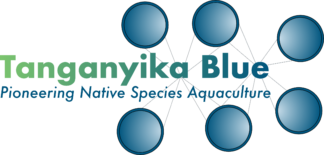Location
Lake Tanganyika
Lake Tanganyika is second largest freshwater lake by volume – it holds close to 17% of the world’s liquid, surface freshwater. With a maximum depth of 1’470m it is the second deepest and with a total length of 676km the longest freshwater lake in the world. The lake covers a total area of 32’600km2 and is shared between Tanzania (41%), Democratic Republic of Congo (DRC) (45%), Burundi (8%) and Zambia (6%).
Inhabiting about 2’000 species of fish, plants, crustaceans and birds the Lake Tanganyika ecosystem is one of the global biodiversity hotspots.
The lake is home to over 300 fish species of which above 90% are endemic and can only be found in the Lake Tanganyika basin. The fish are an important source of protein for the over 10 million people living in the lake’s proximity. However, while the human population around the lake is steadily growing, its wild fish stocks and catches have been wasting away over the last 30 years. Lake Tanganyika and its ecosystem services are threatened by population pressure, malpractices in the fishing industry, invasive species and climate change. The latter has led to a reduction in nutrient recycling in the lake which leads to a decrease in primary production and the wild fish stocks which depend on it.


Aquaculture in Lake Tanganyika
Aquaculture (also called fish farming) is the cultivation of aquatic organisms in controlled environments and is emerging as a vital strategy in Lake Tanganyika to address the increasing demand for fish and mitigate the pressure on wild fish populations. Moreover, the sector has the potential to provide climate resilient livelihoods for local communities and ensure food security. However, the development of a sustainable aquaculture sector requires careful consideration to ensure that it aligns with conservation efforts and does not inadvertently introduce new challenges to the delicate balance of the lake’s ecosystem. Some of the key considerations are thereby: Appropriate species selection (Native Species Aquaculture), optimal nutrient management, strategic farm siting, community empowerement and efficient regulation & governance.
Currently aquaculture production in the whole Lake Tanganyika region is still below 500 tons of fish per year – in comparison, wild capture fisheries from the lake is estimated to yield between 160’000 to 200’000 tons annually. Due to decreasing wild fish catches, increasing fish prices and population pressure the development of the sector has become time critical and establishment of model fish farms has becomes crucial.
Kimbwela, Tanzania
Tanganyika Blue is the first commercial cage aquaculture farm at Lake Tanganyika in Tanzania. The goal is to foster the establishment of a sustainable fish farming sector in the whole Lake Tanganyika region through Native Species Aquaculture. The commercial facility will also incorporate a distribution and training center (The Kigoma Aquahub) to supply high-quality fingerlings, fish feed and know-how to smallholder fish farmers.
Tanganyika Blue’s commercial fish farm is based in Kimbwela, a rural fishing village south of Kigoma town along the shores of Lake Tanganyika . Kigoma is the largest town on the Tanzanian side of the lake and the capital of Kigoma region which has a population of 2.5 million. Current GDP per capita in the region is under 1.6 USD per day and most people live under the extreme poverty line (2.15 USD/day).
Tanganyika Blue aims to bring sustainable aquaculture practices, economic growth, and improved livelihoods to the region. We want to empow local communities and make a positive impact on both Lake Tanganyika and the people who depend on it. Read more about us.


